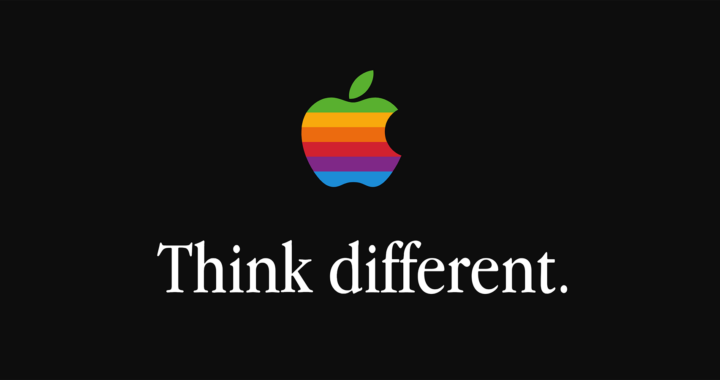Apple has forgone using and plastering a slogan on most of its marketing communications in the past years. However, in 1997, following the return of Steve Jobs to the chief executive post after his ouster in 1985, the company launched the “Think Different” slogan and used it across all of its advertising efforts and most marketing communications. It also became part of its main branding and often appeared with the iconic Apple logo.
A Look Into the Origin of the “Think Different” Apple Slogan, Its Intended Meaning, and Actual Marketing Impact
History and Origin
Apple wanted a new tagline or slogan for a new marketing campaign in 1997. This was when the company was struggling with sales and negligible market share under the leadership of former chief executive Gil Amelio. The advertising agency BBDO pitched the “We’re Back” slogan during an internal meeting. Reports noted that everyone expressed their approval. However, Steve Jobs, who recently returned to the company, disapproved.
Jobs argued that the slogan was “stupid” because Apple was not back yet. He then invited three ad agencies to pitch new ideas that aligned with a particular philosophy that he thought should be reinforced within Apple. The Los Angeles office of TBWA\Chiat\Day was among these agencies. It was hereon that the slogan “Think Different” was presented and later approved. Art director Craig Tanimoto was particularly credited for its creation.
Tanimoto wanted to capture the essence of Apple. He saw the slogan as a reflection of its philosophy of breaking away from conventional thinking. It is also worth noting that it was a play on the famous “Think” tagline of IBM. IBM was a dominant force in the computer industry at that time. Nevertheless, by adding “Different,” Apple was taking a swipe at its then-dominant rival and was positioning itself as the creative and innovative alternative.
Meaning of the Slogan
The slogan was central to the “Here’s to the Crazy Ones” TV commercial. It featured a voiceover celebrating famous visionaries like Albert Einstein, Mahatma Gandhi, and Amelia Earhart. The commercial was also filmed without showcasing Apple products. This was bold for its time. It used black-and-white footage of historical figures. The purpose was to reinforce the idea that Apple was aligned with world-changing thinkers and daring figures.
Nevertheless, at a time when Apple was struggling financially and had lost its innovative edge, the “Think Different” slogan and campaign were intended to remind the audience that Apple has been a disruptive and creative force in the industry. The specific slogan also reaffirmed the core values of the company that centered on challenging the status quo and thinking outside the box. It also positioned Apple as an antithesis of IBM and Microsoft.
Impact on Marketing
There was an initial issue with the “Think Different” phrase. Several linguists and grammarians noted that it was grammatically incorrect. It should have been “Think Differently” to be acceptable based on grammar standards. However, responding to this criticism, Apple explained that their choice was deliberate. “Different” sounded more forceful and also had a poetic feel. The choice also underscored prioritizing creativity over convention.
Nevertheless, with the company building its branding and marketing communications around the slogan, the entire brand was repositioned against its competitors. Apple launched the iMac G3 in 1998 and was marketed under the momentum of the “Think Different” campaign. It sold about 270000 units in its first week and 2 million units within its first year. The stock price jumped from USD 3.56 per share to USD 7.00 per share by the end of 1998.
The campaign won the Grand Effie Award in 2000 for marketing effectiveness and has been named one of the 100 Best Campaigns of All Time by Advertising Age. The slogan also succeeded in reshaping the narrative of Apple and positioning it as a cultural symbol of creativity. Nevertheless, while the current marketing communications of the company lacked a uniform slogan or tagline, “Think Different” remains a part of its brand identity.
